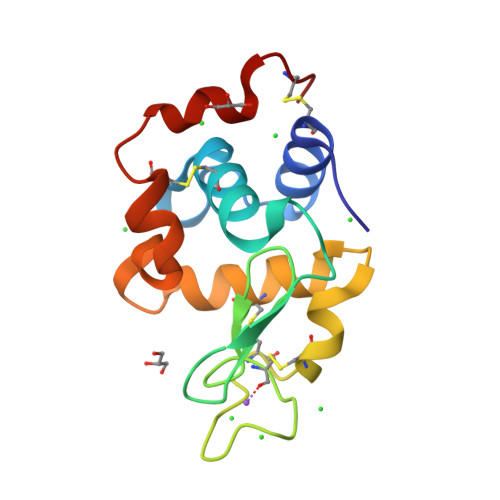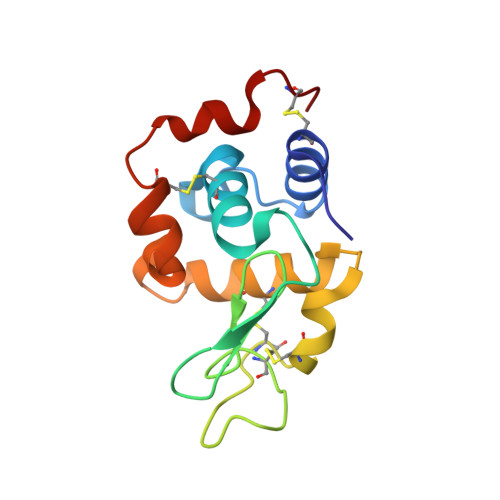Linking B-factor and temperature-induced conformational transition.
de Sa Ribeiro, F., Lima, L.M.T.R.(2023) Biophys Chem 298: 107027-107027
- PubMed: 37172417
- DOI: https://doi.org/10.1016/j.bpc.2023.107027
- Primary Citation of Related Structures:
8D5S, 8D5T, 8D5U, 8D5W, 8D5X, 8D5Z, 8D60, 8D61, 8D62, 8D69, 8D6B, 8D6I, 8D75, 8D77, 8D7A, 8D7B, 8D7C, 8D7D, 8D7J, 8D7L, 8D7Q, 8D7S, 8D8A, 8D8B, 8D8C, 8D8D, 8D8E, 8D8F, 8D8G, 8D8H - PubMed Abstract:
The crystallographic B-factor, also called temperature factor or Debye-Waller factor, has long been used as a surrogate for local protein flexibility. However, the use of the absolute B-factor as a probe for protein motion requires reproducible validation against conformational changes against chemical and physical variables. Here we report the investigation of the thermal dependence of the crystallographic B-factor and its correlation with conformational changes of the protein. We obtained the crystal protein structure coordinates and B-factors at high resolution (1.5 Å) over a broad temperature range (100 K to 325 K). The exponential thermal dependence of B-factor as a function of temperature was equal for both the diffraction intensity data (Wilson B-factor) and for all modeled atoms of the system (protein and non-protein atoms), with a thermal diffusion constant of about 0.0045 K -1 , similar for all atoms. The extrapolated B-factor at zero Kelvin (or zero-point fluctuation) varies among the atoms, although with no apparent correlation with temperature-dependent protein conformational changes. These data suggest that the thermal vibration of the atom does not necessarily correlate with the conformational dynamics of the protein.
Organizational Affiliation:
Laboratório de Biotecnologia Farmacêutica (pbiotech), Faculdade de Farmácia, Universidade Federal do Rio de Janeiro, Rio de Janeiro, RJ 21941-902, Brazil; Programa de Pós-Graduação em Química Biológica, Universidade Federal do Rio de Janeiro, Rio de Janeiro, RJ, 21941-902, Brazil.





















